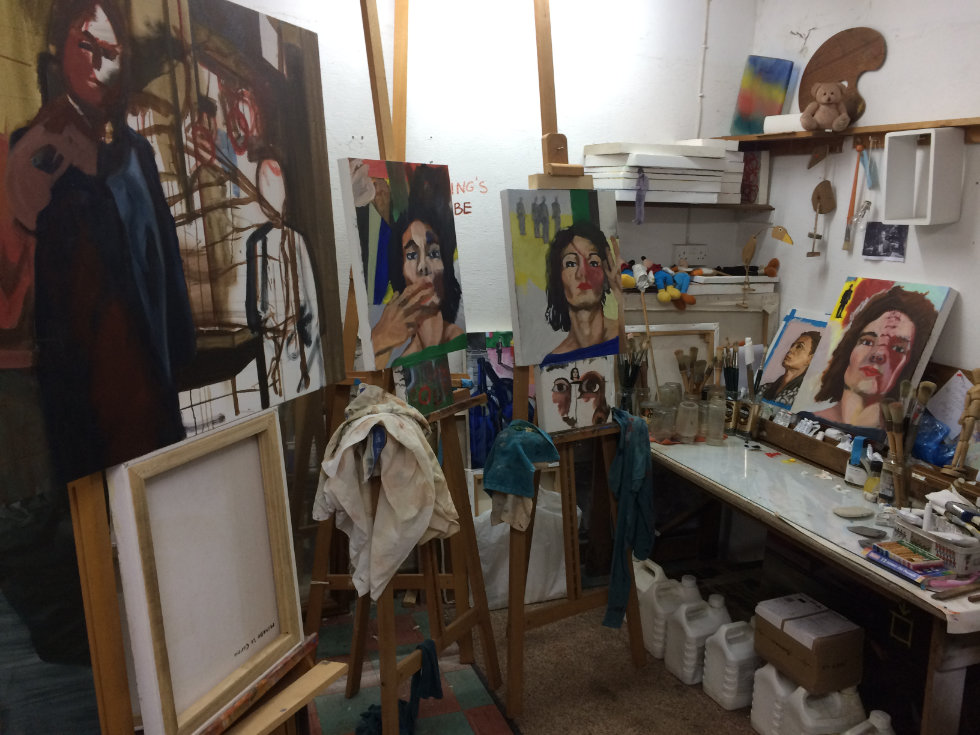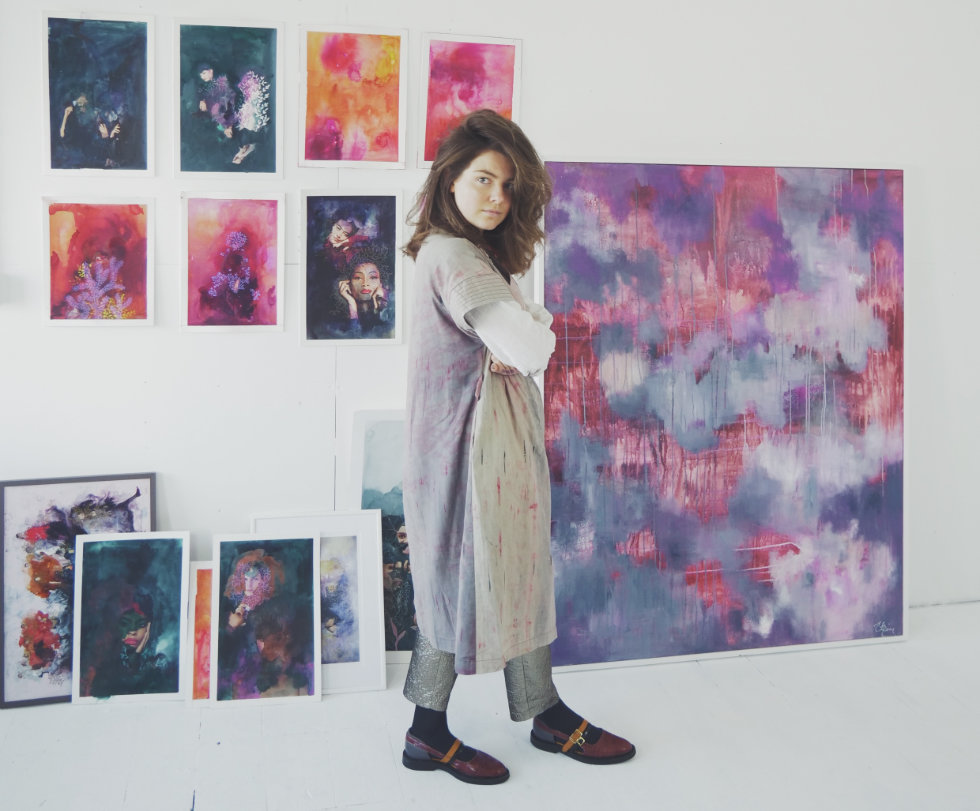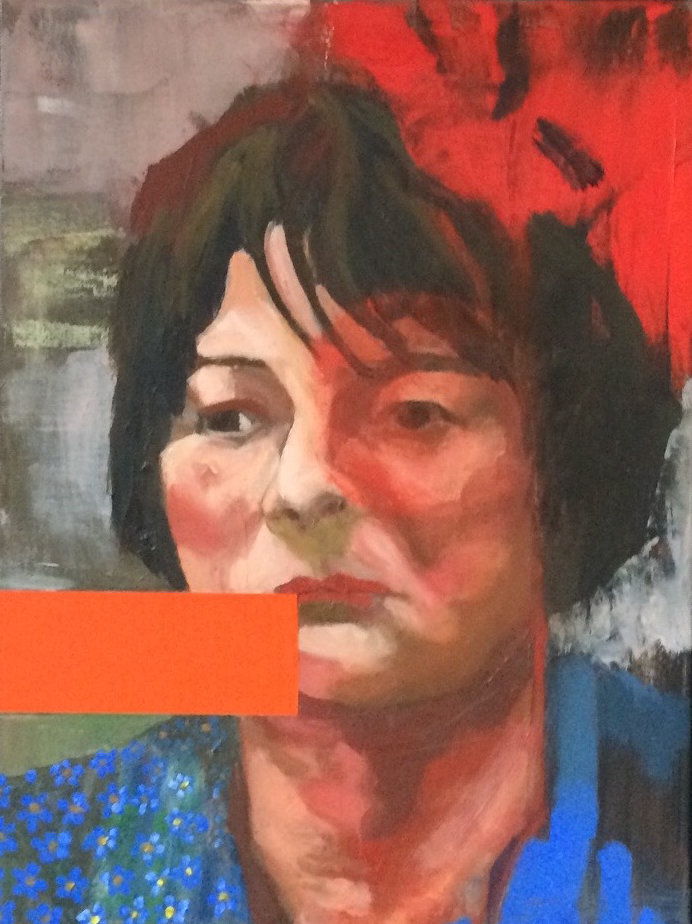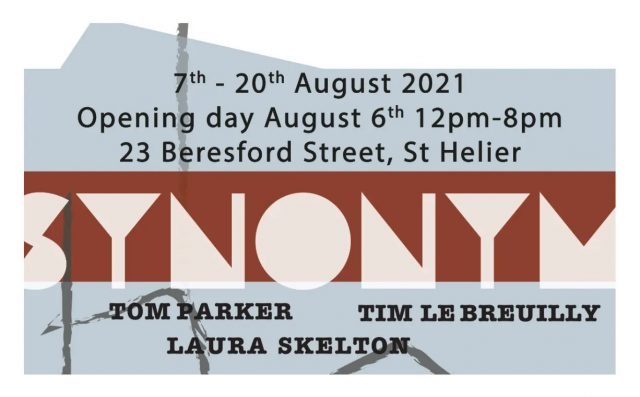Woolf emphasises that having a room to yourself is crucial to the creative process, but how else does it influence the way these women are able to work in practice?
Pippa, who has both a town studio and home workspace, finds herself caught between the demands of family life and her artistic practice:
Although I love my home studio, I do find that there are constant distractions and demands with working from home, which have become exacerbated during the pandemic. We have two children, one working in IT who has been working from home since March, and one in college. With the boys home so much more, domestic responsibilities have become much more time consuming, and my work has had to take a back seat.
My only truly personal space is my studio in town, and I have recently spent more time there to take advantage of that fact.
For Michelle, an oil painter and mixed media collage artist, the distinction between the domestic and the creative sphere is also really important:
The fact that I leave the house and walk about four metres across the garden to my studio door helps to define it as not being part of the domestic setup. I have to be very aware though that when things in my work are challenging emotionally, the domestic could serve as a tempting procrastinator.

Interestingly, she remarks upon the lack of homely comforts in her studio space as being one of its advantages when it comes to working on her large figurative and narrative-based canvases. A small concrete building, Michelle describes her studio as being full of “bits and pieces and heaps of untidiness,” but this in itself, she explains, is a source of inspiration for her.
I feel physically unsafe in my space, but that seems to put me in touch with the essence of what I’m exploring. The room is so tiny that I have to keep swapping my canvases and easels about in order to do the work, making it a very energetic process and this has become something that is part of the work. I have noticed that whatever size or style the studio space, my work evolves to respond to its surroundings.
Contrastingly, Elīza prefers to keep her space “as tidy as an artist studio can possibly be” and she refers to it being a “cosy and light” haven of creativity rather than Michelle’s deliberately harsher, more unhospitable atmosphere.

I like that everything has its own place; it helps me focus better and avoid clutter everywhere. But most importantly, as I am spending a lot of my time there, it feels so good to be in my studio, it’s my happy place of creativity. I have rituals that I do to have the best energy in there.
Pippa likes to tread the line between mess and tidiness, allowing the chaos to take over whilst she’s immersed in a project and then “put[ting] everything back in order ready to start” something new.
Despite their different approaches to how they manage their respective spaces, the artists agree that having a studio space has become fundamental for them.
Elaborating on the doors it’s opened for her, Elīza told me:
Having a studio [not only] encourages artists to experiment more, either with materials or scale, but it immensely boosts confidence. Leaving meals and boardgames to my living room table and having a desk space in the studio entirely dedicated to making art influenced the process to be more mindful and serious.
Lisa agrees, explaining:
I remind myself of the phrase ‘fall in love with the process and the work will follow,’ but it is much easier to proceed when you are surrounded by chosen and/or practical things dedicated to finishing work.

Michelle also considers her studio as a major asset to her artistic process:
It has been crucial to my practice as an artist. If I didn’t have a dedicated space where I can leave ideas half-formed and know they will still be waiting for me when I return, I simply wouldn’t be able to progress. A dedicated studio space allows me to think uninterrupted without being pestered by everything else which, justifiably perhaps, demands my time.
But how do you even go about finding yourself a studio in an island like Jersey?
Here are the artists’ tips, thrown in with some of my own:
Do your research
Contact the Parish, estate agents or even farmers to compile a list of vacant premises and then get in touch with the owners.
Ask for help
ArtHouse Jersey is an invaluable resource for arts advice and support.
Look under your nose
Is there a dead space in your house with potential? Could be a big cupboard or even one corner that could be adapted for your purposes.
Keep your ear to the ground
Ask other artists to find out where they’ve had studio space previously or if they know of anything going.
Manage your expectations
Nowhere is going to be the ‘perfect’ space, so make a list of things you can’t live without and what you’re willing to compromise on.
Team up
If you’re worried about affordability, look out for other creatives on the hunt for a workspace and go in for a lease together.
If you don’t ask, you don’t get
Studio spaces are few and far between in Jersey, so make sure you jump on any leads as and when you hear about them, the worst response you’ll get is a ‘no’.
Perhaps filling a space with your own creativity will always feel daunting, but hopefully it feels daring too. I hope that your art space, no matter how small, is bursting at the seams. We no longer have to hide our manuscripts under blotting paper as Jane Austen once did. Be bold enough to get in people’s way and take up room without apologising for it. Let your work stain the carpet and crawl up the walls.
Go on: make a mess, it’ll be great.





